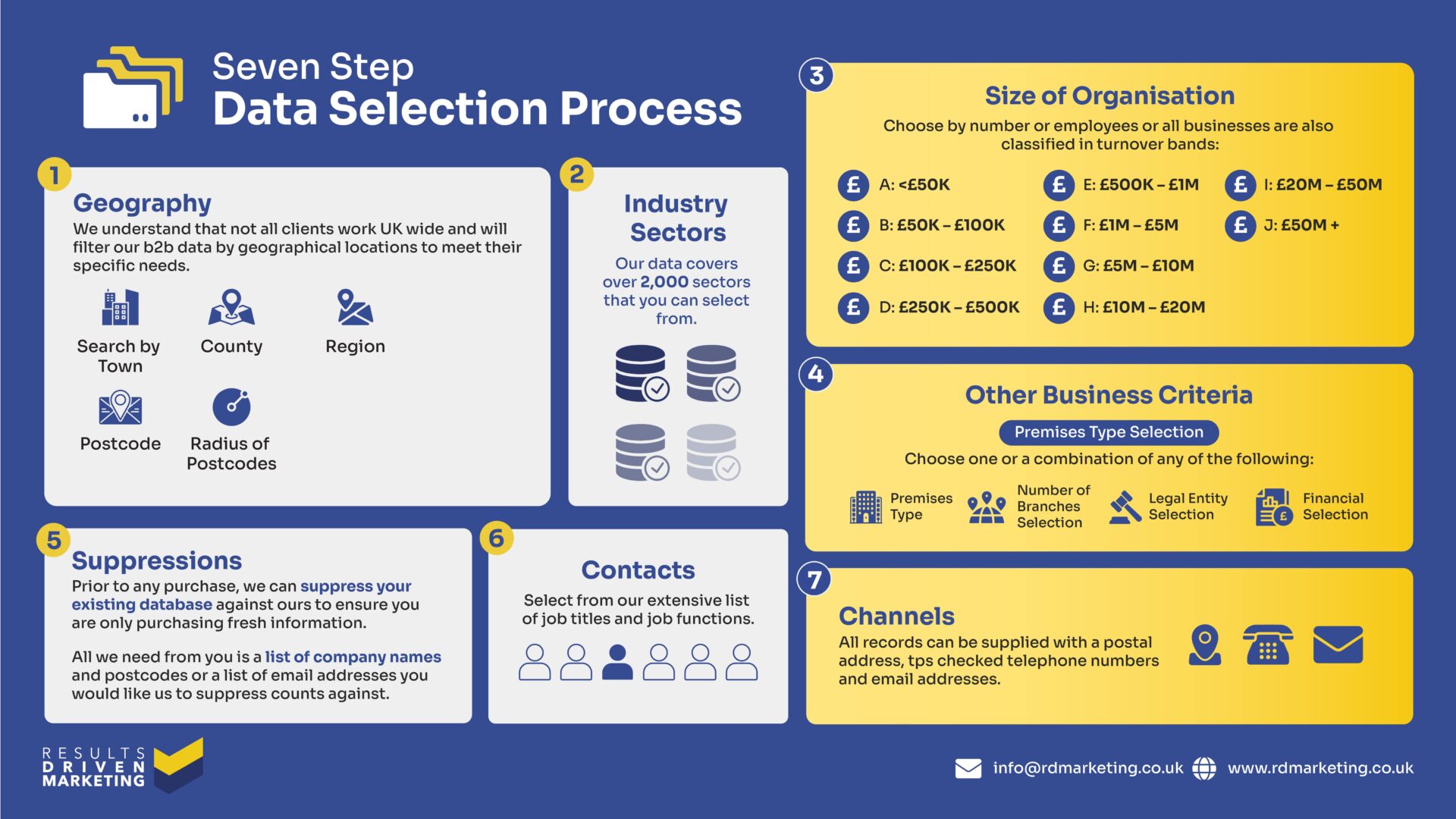
What is Integrated Marketing?
A common question businesses are asking is, what is integrated marketing? Simply put, integrated marketing is a multi-channel approach that aligns every part of a brand’s messaging, visuals, and goals to create a smooth, consistent experience for customers.
Rather than working in isolated channels, integrated marketing brings together different platforms—social media, direct mail, telemarketing, email marketing, and more—to deliver a cohesive message that strengthens brand presence.
But why is integrated marketing so essential? Simply put, integrated marketing allows companies to build a cohesive identity that reaches people wherever they are, no matter the platform.
This approach ensures that whether a customer receives a targeted email, sees a social media ad, or interacts with a direct mail piece, the message feels consistent, familiar, and relevant. It’s about creating a fluid experience that draws people in and leaves a lasting impression.
So, what is integrated marketing? It’s not just another trend but a foundational approach to creating impactful, cohesive campaigns. At RD Marketing, we support brands looking to strengthen their marketing efforts with tools like our Email Address List Data and Data Enrichment Services, ensuring that each piece of the marketing puzzle fits together seamlessly.
Table of contents:
What is Integrated Marketing?
When you hear the term integrated marketing, you might wonder, what exactly is integrated marketing? In simple terms, integrated marketing is a cohesive approach to marketing communication that aims to unify every piece of a brand’s message across all channels.
Rather than using separate strategies for different platforms or marketing activities, integrated marketing combines both traditional and digital efforts to create a seamless and consistent message.
Imagine a customer first encountering a brand through a social media ad, then receiving a follow-up email, and finally seeing an ad in their mailbox.
With integrated marketing, each of these touchpoints delivers a message that feels connected, reinforcing the brand’s identity and values. This unified strategy ensures that customers experience the same message across various channels, building familiarity and trust over time.
The essence of integrated marketing is to bring everything under one roof: from traditional efforts like Direct Mail Data and telemarketing to digital strategies, including email and social media marketing. By aligning each of these components, integrated marketing helps brands achieve a steady, recognisable presence that resonates with customers at every stage.
How Does Integrated Marketing Work?
Integrated marketing’s core purpose is to deliver a consistent message across all customer touchpoints. Here’s how it combines various efforts:
- Unification of Traditional and Digital Marketing: Integrated marketing doesn’t prioritise one channel over another; instead, it brings together traditional efforts—like print ads or telemarketing—with digital tactics like Email Address List Data and social media. This balance ensures that customers receive a comprehensive message, regardless of where they engage.
- Cohesive Messaging Across Platforms: Whether customers are reached through a direct mail campaign, digital ad, or email newsletter, each piece of communication aligns with the brand’s overall strategy and message. This consistent approach makes it easier for customers to identify with the brand, creating a more memorable experience.
- Cross-Channel Strategy with Adapted Tactics: Integrated marketing leverages each platform’s unique features to make the brand more accessible. For instance, a direct mail piece may direct a customer to a website, while a social media post can prompt an email subscription. Tools like our International Email List and Consumer Data are essential in helping businesses tailor messages across borders and demographics, making each interaction relevant.
The ultimate goal of integrated marketing is to ensure that every marketing effort—whether traditional or digital—contributes to a unified brand presence. By bringing together these strategies, companies can maximise their reach, engage more effectively with their audience, and make each campaign count.
At RD Marketing, we support brands in building cohesive strategies with solutions like Data Cleansing Services and CTPS Checker, ensuring that every message reaches the right people in the best way possible.
Key Components of Integrated Marketing
Now that we’ve explored what is integrated marketing, let’s dive into the essential elements that make up successful integrated marketing strategies. To create a cohesive and powerful approach, integrated marketing must be built on a few core components.
These include consistent brand voice, a multi-channel approach, centralised planning with data-driven decisions, and a strong focus on the customer. Together, these elements create a solid foundation for brands to deliver a unified and effective message.
Consistent Brand Voice and Messaging
One of the most critical elements of integrated marketing is maintaining a consistent brand voice across all platforms. When your brand’s messaging feels unified, it builds trust and strengthens recognition.
This means that whether your customer interacts with an ad on social media, a direct mail piece, or an email, they should experience the same tone, values, and ideas. This consistency isn’t just about words; it’s also about visuals, tone, and overall presentation.
By using services like our Email Marketing Management and Data Enrichment, brands can ensure that their messaging reaches audiences effectively, with relevant and tailored content that enhances each customer’s experience.
Multi-channel Approach
In integrated marketing, a multi-channel approach is essential. This involves using both online and offline platforms, including social media, email, SEO, pay-per-click (PPC) advertising, as well as more traditional methods like print, events, and direct mail. By engaging customers across multiple channels, brands increase their visibility and create a more impactful presence.
The goal here is to meet customers wherever they are—whether they’re on Instagram, checking their inbox, or flipping through a catalog. Each channel reinforces the other, building familiarity and driving engagement.
For example, incorporating Direct Mail Data alongside digital efforts can provide a personal touch that resonates with certain audience segments. Meanwhile, Telemarketing Data can help reach specific markets more directly, complementing digital campaigns.
Centralised Strategy and Data-Driven Decisions
A centralised approach is essential in integrated marketing because it ensures that all activities are aligned and support the overarching strategy.
Centralised planning means that each campaign is built with a common purpose, which prevents mixed messages and creates synergy between channels. Additionally, data plays a significant role here. By making data-driven decisions, brands can identify the most effective channels, timing, and messages to optimize their campaigns.
With services like our Data Cleansing Services and B2B Data, brands can be confident that their data is accurate, up-to-date, and effective. Accurate data is the foundation of any data-driven strategy, as it allows brands to make informed decisions that boost efficiency and performance.
Customer-Centric Focus
At its heart, integrated marketing is customer-centric, focusing on meeting customers where they are and delivering messages that resonate with their needs.
By understanding the preferences and behaviours of the target audience, brands can tailor their integrated marketing strategies to provide a more personalised experience. This customer focus is vital for building loyalty and driving engagement.
For instance, using our Consumer Data enables brands to segment their audience effectively, creating personalised campaigns that speak directly to each customer’s interests and needs. Furthermore, our CTPS Checker ensures compliance and respect for customer preferences, allowing brands to interact with audiences more responsibly and ethically.
Each of these key components—consistent messaging, a multi-channel approach, centralised planning, and a customer-centric focus—works together to answer what is integrated marketing in practice.
When brands use integrated marketing strategically, they can drive greater engagement, optimise their resources, and establish a strong, unified presence across all channels.
Benefits of Integrated Marketing for Business Growth
Adopting integrated marketing is more than just aligning channels—it’s about driving measurable business growth through consistency, efficiency, and stronger customer relationships. When all of your campaigns are connected, you build a unified presence that makes your brand instantly recognisable.
Key advantages include:
-
Stronger brand recognition: Customers see the same messaging across email, social media, direct mail, and telemarketing, which reinforces trust and familiarity.
-
Improved ROI: By coordinating campaigns, you reduce wasted spend and maximise the effectiveness of every channel.
-
Better customer experience: A seamless journey—from first impression to conversion—keeps prospects engaged and more likely to buy.
-
Data-driven insight: With services like Data Enrichment and Email Address List Data, you can track performance across touchpoints and refine campaigns for even greater results.
For businesses aiming to scale, integrated marketing isn’t optional—it’s the backbone of modern strategy. At RD Marketing, we help companies unify their outreach with GDPR-compliant B2B Data, Direct Mail Data, and Email Marketing Management Services that slot effortlessly into your campaigns.









